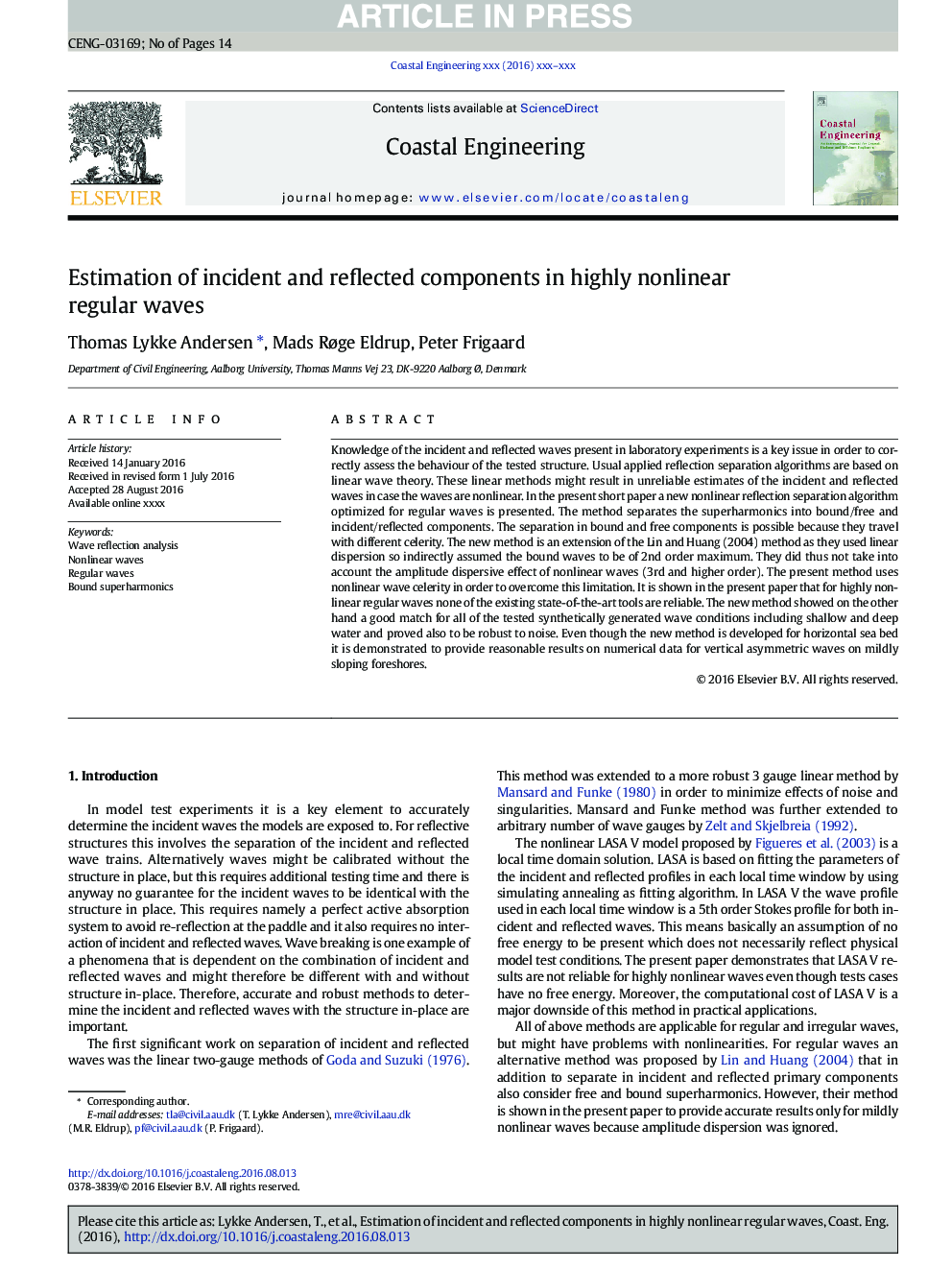| Article ID | Journal | Published Year | Pages | File Type |
|---|---|---|---|---|
| 5473408 | Coastal Engineering | 2017 | 14 Pages |
Abstract
Knowledge of the incident and reflected waves present in laboratory experiments is a key issue in order to correctly assess the behaviour of the tested structure. Usual applied reflection separation algorithms are based on linear wave theory. These linear methods might result in unreliable estimates of the incident and reflected waves in case the waves are nonlinear. In the present short paper a new nonlinear reflection separation algorithm optimized for regular waves is presented. The method separates the superharmonics into bound/free and incident/reflected components. The separation in bound and free components is possible because they travel with different celerity. The new method is an extension of the Lin and Huang (2004) method as they used linear dispersion so indirectly assumed the bound waves to be of 2nd order maximum. They did thus not take into account the amplitude dispersive effect of nonlinear waves (3rd and higher order). The present method uses nonlinear wave celerity in order to overcome this limitation. It is shown in the present paper that for highly nonlinear regular waves none of the existing state-of-the-art tools are reliable. The new method showed on the other hand a good match for all of the tested synthetically generated wave conditions including shallow and deep water and proved also to be robust to noise. Even though the new method is developed for horizontal sea bed it is demonstrated to provide reasonable results on numerical data for vertical asymmetric waves on mildly sloping foreshores.
Keywords
Related Topics
Physical Sciences and Engineering
Engineering
Ocean Engineering
Authors
Thomas Lykke Andersen, Mads Røge Eldrup, Peter Frigaard,
